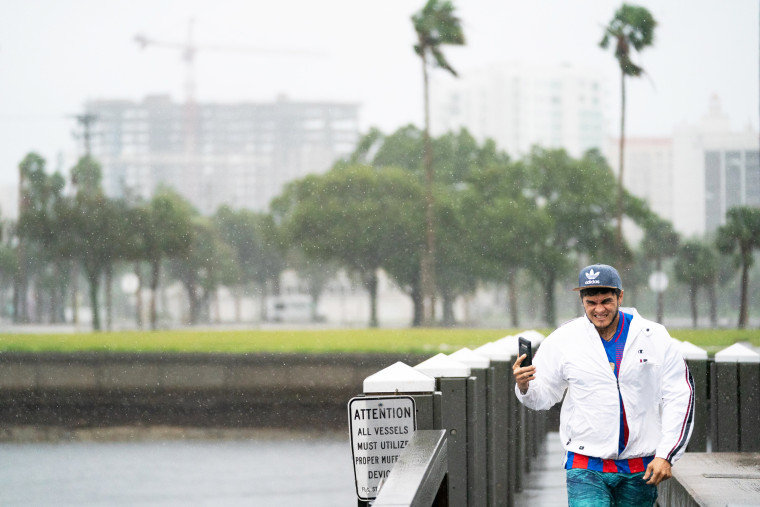Floridians are giving TikTok users a front-row seat to Hurricane Ian.
Dozens of TikTok users in Florida used TikTok’s livestream feature on Wednesday to offer a window into their lives as the hurricane approached. Some showed beaches and struggled to speak above the howling winds, while others broadcast from their homes as trees whipped outside.
“I wanted to give an accurate portrayal,” Brad Stecklein, a golf instructor in Fort Myers, who goes by “golfpantsman” on TikTok, told NBC News in a phone interview on Wednesday. Stecklein has gone live on TikTok to over 5,000 people to showcase the storm in his backyard.
“These storms have been so overhyped in the 20 years my wife and I have lived down here, it’s hard to take them seriously,” he said. “This one is going to redefine how people act.”
Para información en español de Noticias Telemundo haga click aquí
Stecklein also made some regular TikTok videos in between his livestreams.
As the Category 4 storm approached the coast of Florida on Wednesday, authorities urged residents in low-lying counties to leave before floodwaters hit. But many people have stayed, with some livestreaming their circumstances to provide people with a sense of what’s happening on the ground.
“I feel safe and just want to give everyone a view of what’s going on in this area,” one man said in a livestream while water poured into his backyard pool. The user, “derek_sheen,” said he was in Lee County, near the Gulf of Mexico. He did not immediately respond to a request for comment.
“It’s not as bad as I thought it would be,” he added. “I’d go for a swim right now, but I don’t think it’s safe.”
NBC News found a wide variety of livestreams from Floridians who have previously posted other location-identifying information on social media. Their livestreams show a torrential downpour, strong winds and rising waters in communities like West Palm Beach and Cape Coral.
Some livestreams drew hundreds and even thousands of viewers, many of whom sent prayers and messages of support through the platform’s comment system. One livestream seen by NBC News counted more than 55,000 concurrent viewers.

“Thanks for the follows,” one woman said while thousands of people tuned into her livestream. The user, “flexi.lexiiii,” identifies herself on Instagram as a personal trainer in Cape Coral, which is under a state of emergency due to the hurricane. She did not immediately respond to a request for comment.
In her front yard, palm trees braced against the strong winds. A man could be heard offscreen describing the winds as over 70 miles per hour. Some comments trickling in sent the woman prayers, while others predicted her “house will disappear.” TikTok didn’t immediately respond to a request for comment about the hurricane livestreams.
TikTok introduced its livestream feature in 2019, and it has since become a popular way of creating content on the app. And while livestreaming has been around for years on the internet, TikTok’s feature has quickly become one of the most widely embraced live platforms. In July, TikTok released a study from Ipsos, a market research company, that found 1 in 5 users had watched livestreams on the app, and that 62% of that group watched a livestream every day. TikTok currently counts over a billion monthly users.
That makes TikTok among the biggest livestream platforms alongside Twitch, the Amazon-owned livestream website that is focused on gaming.
TikTok’s livestreaming feature has been used for fun but also to share breaking news, such as when Russia invaded Ukraine. It has also been used to share disinformation — early in the Ukraine conflict, NBC News reported that some TikTok users were pretending to be in active conflict zones to solicit donations.
“Anybody can be an amateur journalist,” Stecklein said. “Now anyone can hop on as an amateur and say ‘This is what you see.’”
